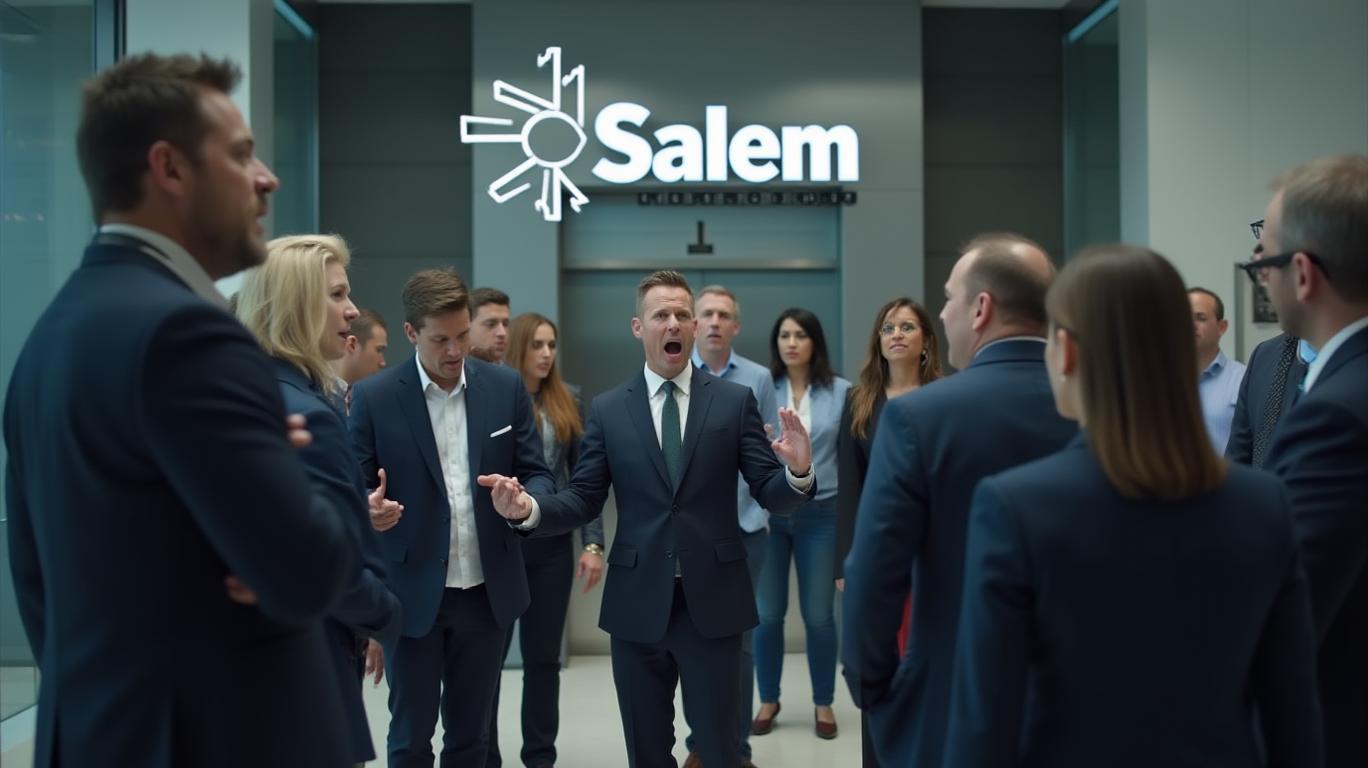Sylvamo Corporation’s Strategic Shift Amid Leadership Transition and Operational Challenges
Sylvamo Corporation (SLVM) delivered a cautiously optimistic Q1 2025 earnings report, highlighting both long-term strategic priorities and near-term operational hurdles. With CEO Jean-Michel Ribiéras set to retire by year-end, the company is navigating leadership transition while aiming to solidify its position as a “low-cost, agile” player in the paper and packaging industry. Below, we dissect the key takeaways, financial outlook, and risks shaping Sylvamo’s investment thesis.
Ask Aime: "Is Sylvamo poised for growth despite leadership transition?"

Leadership Transition and Strategic Focus
Ribiéras, who has led Sylvamo for four years and the broader paper industry for over three decades, announced his retirement at the end of 2025. His successor, CFO John Sims, brings 31 years of sector experience, signaling continuity in strategic direction. The company emphasized three pillars for growth:
1. Commercial Excellence: Maintaining “supplier of choice” status through customer-centric solutions.
2. Operational Excellence: Reducing costs and enhancing agility via localized production and low-cost facilities (e.g., Brazil mills).
3. Financial Discipline: Delivering consistent returns to shareholders through dividends and buybacks.
These pillars underpin Sylvamo’s goal to become the “investment of choice,” but execution will depend on overcoming current headwinds.
Q2 2025 Outlook: A Baseline for Recovery
Sylvamo’s Q2 2025 Adjusted EBITDA is projected to range between $75 million to $95 million, down sharply from $157 million in Q4 2024. This decline stems from:
- Unfavorable price/mix: Challenges in Europe and Latin America.
- Seasonal weakness: Reduced demand in Latin America.
- High maintenance costs: A $36 million increase in planned outages.
However, management projects a “significant improvement” in the second half (H2) of 2025, driven by:
- Reduced outage expenses: Over 80% of annual maintenance costs will be incurred by mid-year, easing pressure on Q3/Q4.
- Operational efficiencies: Lower energy prices and manufacturing cost reductions in Europe and North America.
- Stabilized commercial conditions: Improved price/mix trends and stable volume expectations.
The stock’s trajectory will hinge on whether H2 results align with these expectations. A strong rebound could rekindle investor confidence after a Q1 2025 net income drop to $0.65 per share from $1.94 in Q4.
Risks and Resilience
Despite the H2 optimism, Sylvamo faces material risks:
- Global economic slowdown: Tariffs and weak demand for uncoated freesheet paper could strain margins. Sylvamo mitigates this through localized sourcing (90% of raw materials and shipments stay within key regions).
- Inflation pressures: Rising input and capital costs threaten profitability, though Brazilian mills’ low-cost structure provides a buffer.
- Balance sheet flexibility: A 1.1x leverage ratio and $400 million revolving credit facility offer resilience, but debt reduction remains a priority.
Ask Aime: Sylvamo's Q1 2025 earnings hint at near-term hurdles, but H2 recovery looks promising.
The Investment Case
Sylvamo’s value proposition hinges on its ability to execute its three-pillar strategy while navigating cyclical industry dynamics. Key positives include:
- Strong liquidity: $400 million in credit availability and $25 million in Q1 free cash flow (despite seasonal dips).
- Shareholder returns: $20 million in buybacks and a $0.45 dividend in Q1, with $62 million remaining under its $150 million repurchase authorization.
- Long-term positioning: Low-cost Brazilian mills and a focus on operational agility position Sylvamo to outperform peers in a cost-sensitive environment.
Conclusion: Sylvamo’s H2 Performance Will Be the Litmus Test
While Sylvamo’s Q2 results face headwinds, the company’s forward-looking guidance suggests a clear path to recovery. If H2 delivers on reduced maintenance costs and operational efficiencies, SLVM could regain momentum. Investors should monitor:
- Q2 EBITDA results: Will the $75M–$95M range hold, and how close does it get to the upper end?
- Cash flow improvement: Can free cash flow rebound from Q1’s $25M negative figure?
- Share repurchase activity: Will management use remaining buyback capacity to offset potential volatility?
With a leadership transition managed thoughtfully and a disciplined financial framework in place, Sylvamo’s future hinges on executing its operational turnaround. For now, the $75M baseline sets a low bar—success in H2 could make SLVM a compelling play in a consolidating industry.










